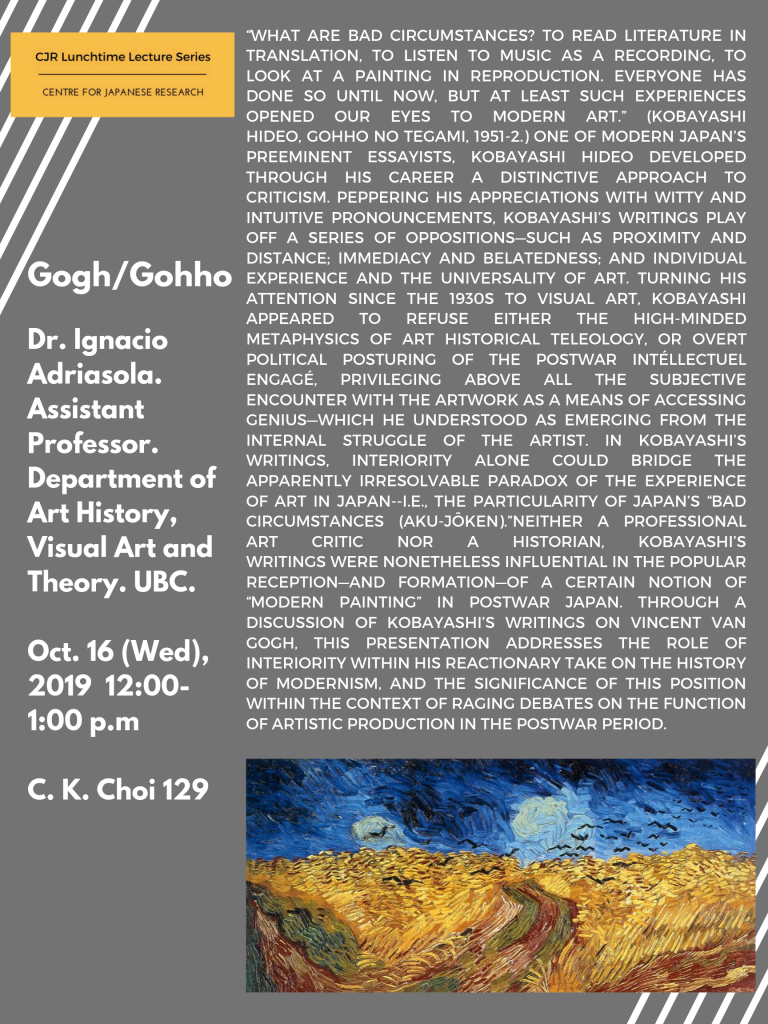Gogh/Gohho
Dr. Ignacio Adriasola. Assistant Professor. Department of Art History, Visual Art and Theory. UBC.
Oct. 16 (Wed), 2019 12:00-1:00 p.m.
C. K. Choi 129

“What are bad circumstances? To read literature in translation, to listen to music as a recording, to look at a painting in reproduction. Everyone has done so until now, but at least such experiences opened our eyes to modern art.” (Kobayashi Hideo, Gohho no tegami, 1951-2.)
One of modern Japan’s preeminent essayists, Kobayashi Hideo developed through his career a distinctive approach to criticism. Peppering his appreciations with witty and intuitive pronouncements, Kobayashi’s writings play off a series of oppositions—such as proximity and distance; immediacy and belatedness; and individual experience and the universality of art. Turning his attention since the 1930s to visual art, Kobayashi appeared to refuse either the high-minded metaphysics of art historical teleology, or overt political posturing of the postwar intéllectuel engagé, privileging above all the subjective encounter with the artwork as a means of accessing genius—which he understood as emerging from the internal struggle of the artist. In Kobayashi’s writings, interiority alone could bridge the apparently irresolvable paradox of the experience of art in Japan–i.e., the particularity of Japan’s “bad circumstances (aku-jōken).”
Neither a professional art critic nor a historian, Kobayashi’s writings were nonetheless influential in the popular reception—and formation—of a certain notion of “Modern Painting” in postwar Japan. Through a discussion of Kobayashi’s writings on Vincent van Gogh, this presentation addresses the role of interiority within his reactionary take on the history of modernism, and the significance of this position within the context of raging debates on the function of artistic production in the postwar period.